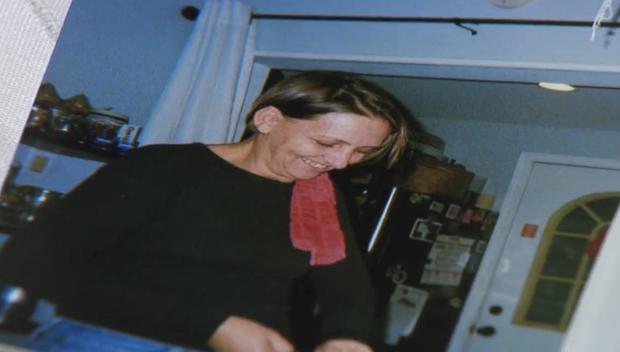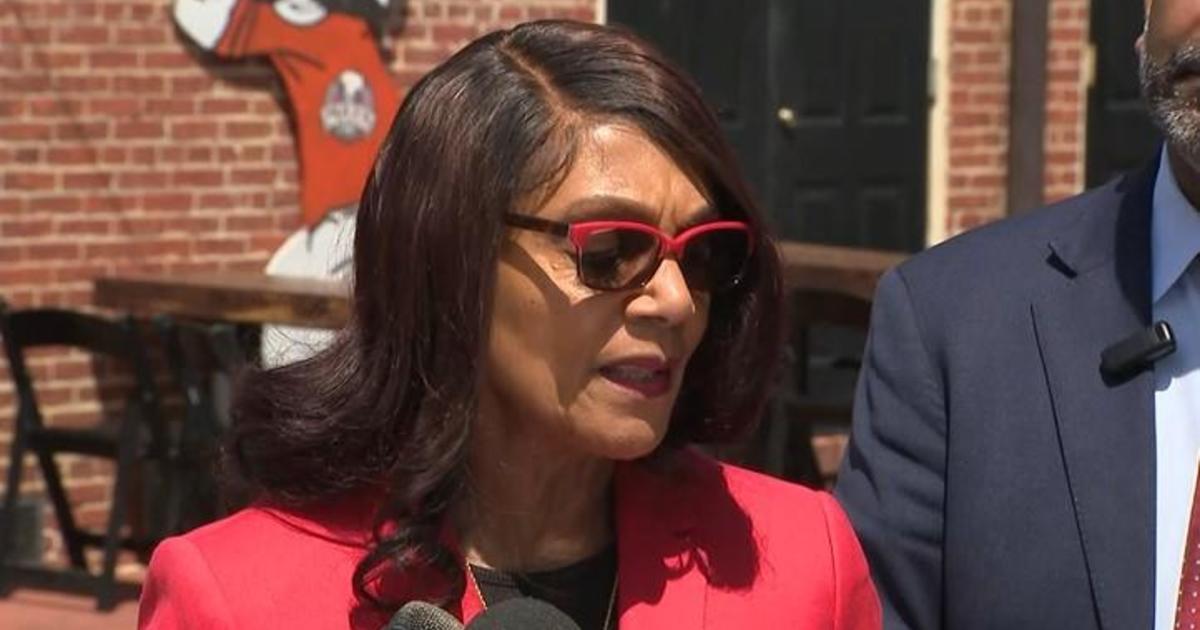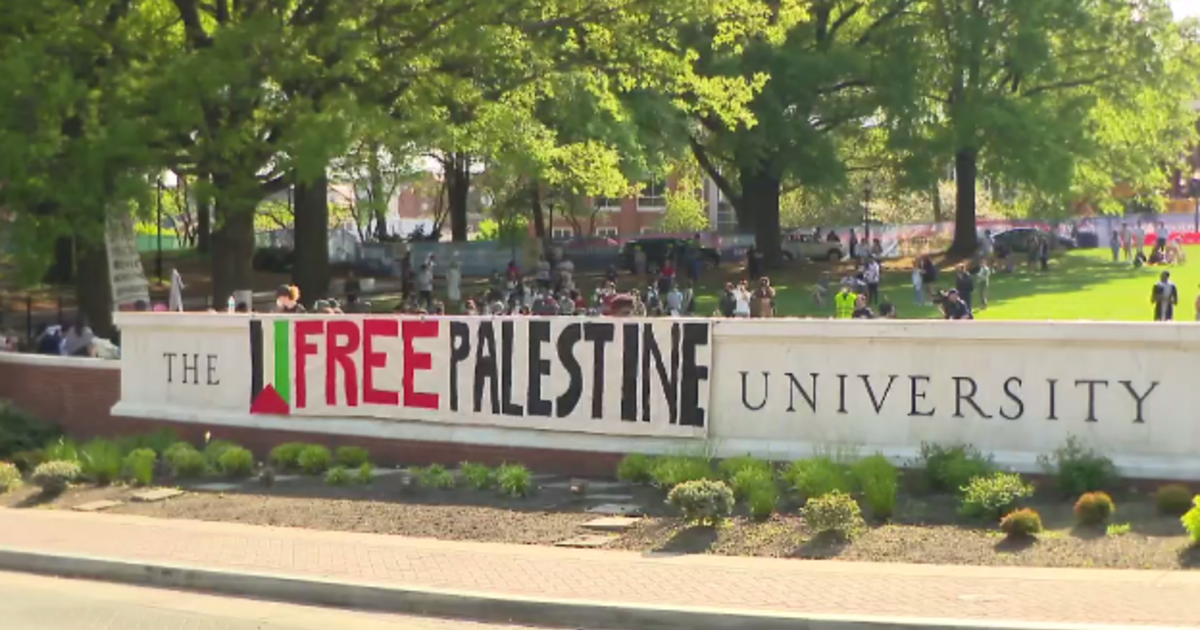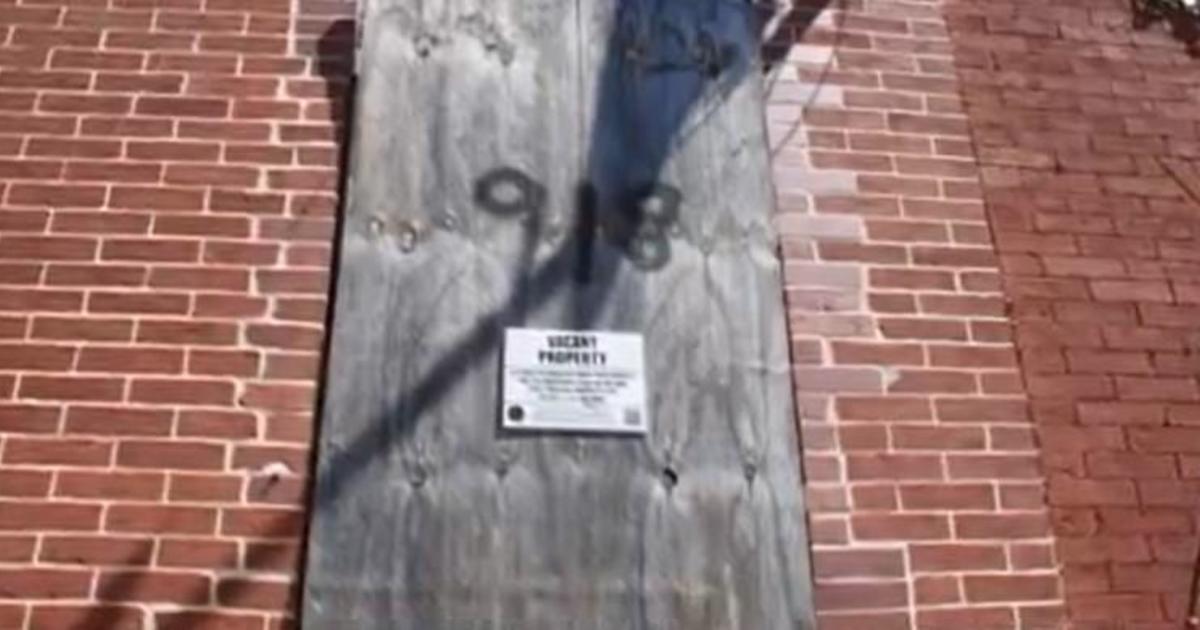Baltimore Beltway work zone where 6 died was eligible for speed camera; children of victim say mom 'very afraid'
Three months after the deadliest work zone crash in Maryland history, loved ones of the six killed along the Baltimore Beltway are still searching for answers and demanding justice.
The heartbroken children of Sybil DiMaggio spoke to WJZ in their first interview since the tragedy that took their mother's life.
"It's terrible. It's not just our mom. It's other people's dad and family members," said Dylan DiMaggio as he sat next to his sister Nora.
"Nothing has been the same for us, and this is just one family. There were five other people there, and that's just one accident," Nora DiMaggio told WJZ Investigator Mike Hellgren. "It's horrible. It's just horrible."
Baltimore County prosecutors said an Acura speeding at more than 100 miles an hour entered an opening in the safety barrier, flipped over and killed the six workers.
"Just in an instant, your whole world is overturned. Nothing is the same. You don't cope with it. You don't move on," Nora DiMaggio said.
The siblings told WJZ their mom, a veteran construction worker, found that particular construction site unnerving.
"She was very afraid because she had to exit and re-enter the job site frequently—just constantly in and out of the cars, trying to get through that space," her daughter said. "She hated it. She hated working there because it was so nerve-racking for her that something could happen so easily."
On average, more than 200,000 cars and trucks use that part of the Beltway daily. It is part of a 19-mile congestion relief project on I-695 that broke ground in 2020 and is expected to cost $179 million.
Her brother described his reaction to prosecutors' findings that the vehicles involved were going as fast as 122 miles an hour as "very shocking. I didn't know cars could get that fast on 695."
"What's a hard hat going to do against a car?" Nora DiMaggio asked.
"You never think it's going to happen, but you know, she always talked about how nervous it made her," she said. "Just think about how nervous it makes you when a car gets a little too close to you when you're on the road. You get that anxiety and then being without a car and in minimal safety gear."
The deaths prompted a national call to action and multiple investigations looking into what happened and whether it could have been prevented. You can read the National Transportation Safety Board's preliminary report here.
Prosecutors have blamed aggressive driving in addition to speed and say one suspect was impaired.
WJZ investigators discovered the work zone where DiMaggio lost her life did not have a speed camera even though it was eligible for one through the Maryland SafeZone law, which has been in place for more than a decade.
That raises questions about how effectively the law is being used to protect the vulnerable.
Even today there is no speed camera in that work zone.
"There should be. It was shocking to me to know that there wasn't one," Dylan DiMaggio told WJZ.
We took our findings to Maryland Lieutenant Governor Aruna Miller, a transportation engineer herself, who chairs a task force created after the Beltway deaths to make sure another tragedy does not happen. Her team is looking at a wide variety of solutions from more cameras to driver education and more visible law enforcement presence.
"Is there anything that can be done immediately, right now to protect those workers on the job?" Hellgren asked the lieutenant governor.
"By no means after this incident happened did they just call it a day," Miller said. "They looked at that and said we all feel responsible for what happened. Our hearts are heavy with what happened, and we are making immediate changes."
"Are you going to look at—with this area being eligible for a speed camera—why one was not placed there?" Hellgren asked.
"There was a thought process behind it," Lieutenant Governor Miller said. "And it was determined that it was not needed at that particular location. But again, this is one of the things we need to look at during the work group: What is the process right now? How can we make sure that every roadway that qualifies under the law gets the speed cameras."
WJZ data journalist Rachel Gold's analysis of Maryland Department of Transportation data found only eight of the 30 active construction projects in Maryland that are eligible for speed cameras currently have them.
This is despite more than 7,500 work zone crashes in the past six years in Maryland and at least 145 since the six workers died.
"In this moment is an opportunity that we can create better, do better, and that's exactly what we want to do because some of those same family members reached out and said, 'We want you to make things safer for other construction workers,' and that's exactly what we're doing," the lieutenant governor said.
Hellgren asked her whether she thinks a speed camera could have saved lives in this instance. "Well, take a look at it. If we're looking at individuals who were speeding in excess of 100 mph, I think there are other tools that we also need to be looking at. One—driver education—and that's what one of the sub-groups is going to be looking at."
A challenge is current Maryland law that mandates the speed cameras in construction zones must be staffed at all times.
Still, many states do not even permit speed cameras in work zones.
Maryland can use federal funding to expand their highway work speeding cameras. As of February 2022, The Highway Safety Initiative Program has eased restrictions and allows funding for safety camera systems.
"There's no collective sense that there's something wrong with speeding in a work zone and so people feel free to go 120 mph," said Brian Turmail with Associated General Contractors of America.
On worker safety, Turmail said, "Every day they're holding their collective breath that the car doesn't crash into their work zone and take one of their friends, one of their family members or themselves out."
All Nora and Dylan DiMaggio have now are memories of their mom. They shared some of their favorite photos with WJZ.
"To us, she was a mother, she was everything. To them, she was just a worker. She's probably been replaced already," Nora DiMaggio said.
She spoke about her mother's love for music and sports. "I want to talk to my mom. I want to talk to her all the time actually," she said. "…I wish I had her here. I wish I still had her around."
"Just think about your other fellow humans on the road," said her brother Dylan. "Just drive a little safer. Slow down a little bit."
They are speaking to bring awareness to the dangers other construction workers like their mom face every day and hope others will never go through their pain.
"That's a big loss, not just for Nora and me but for everybody else who knew her and was a part of her life," her son said.









